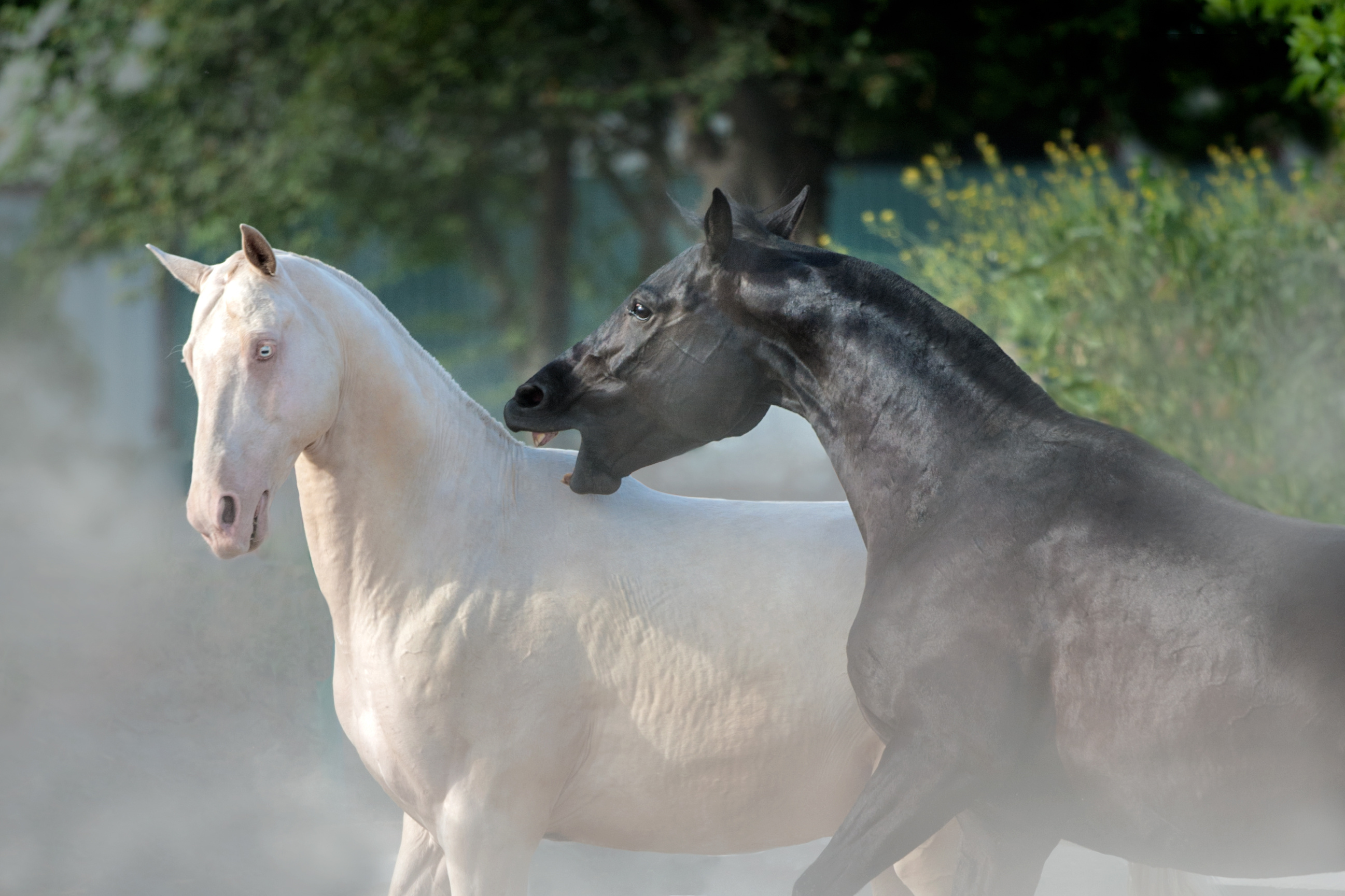Home > Horse World > Aggression Towards a New Horse
Aggression Towards a New Horse
- March 6, 2025
- ⎯ Equus
Q: For the past two years, my Quarter Horse gelding has been kept in a paddock with other horses. He became very upset when the leader of the herd, a Friesian mare, was sold and taken away. A month ago a new mare arrived, but my horse has become very aggressive toward her, and we had to move him to a separate paddock, where he paces constantly. How do I solve this problem?

A: It’s sad that your horse is all by himself now. His fence-walking behavior is an attempt to get back to his old herd.
Any changes in a stable herd environment can lead to stress. Your horse has undergone two big stresses: First his preferred partner left the herd, and then a different horse arrived. Introducing a horse into an existing herd must be done gradually and slowly.
To bring a new horse into a herd, I recommend first placing him in a solid enclosure or pasture next to the other horses so they can safely meet from a distance or over the fence. Then, gradually turn the newcomer out with the others for short periods, slowly increasing the duration and bringing him in at night. This technique might also work well for your gelding now, assuming that he got along with the rest of the herd before the Friesian mare left.
Click here to learn how to read equine body language.
Another option is to divide the herd into two separate groups for a while. Turn your gelding out with some of the original herd in one pasture, and the mare with the rest of the horses in a different pasture. Eventually, you may be able to slowly integrate the two herds without conflict.
If you have the time, you can also try introducing the newcomer to each horse in the herd individually. All methods require direct supervision until everyone appears comfortable. Meanwhile, go on trail rides with the new mare’s owner so that your horses can get acquainted while they’re working. It just might take some time to find the right dynamics.
Keep in mind, however, that some horses may never be able to mingle with new herdmates because they were not socialized properly when they were young and have grown up in seclusion. Some are so afraid of other horses that they become aggressive. Others may be so stressed that they won’t eat or go to the water tank to drink.
These horses might be better off in a stall or turned out alone. Sometimes it’s OK for them to see other horses while out in their pasture so long as they can keep their personal space. A paddock off the stall next to another horse can also be a good arrangement, allowing the less social one to go outside and meet over a fence or stay inside if he chooses. Most horses enjoy the company of others even if they do not have direct physical contact.
Remember, whenever a change is made in a herd, it will take a few weeks for the hierarchy to stabilize again, and it is very important to keep everybody safe during this time.
Jeannine Berger, DVM, DACVB
Sacramento Veterinary Behavior Services
Vacaville, California
Don’t miss out! With the free weekly EQUUS newsletter, you’ll get the latest horse health information delivered right to your in basket! If you’re not already receiving the EQUUS newsletter, click here to sign up. It’s *free*!









